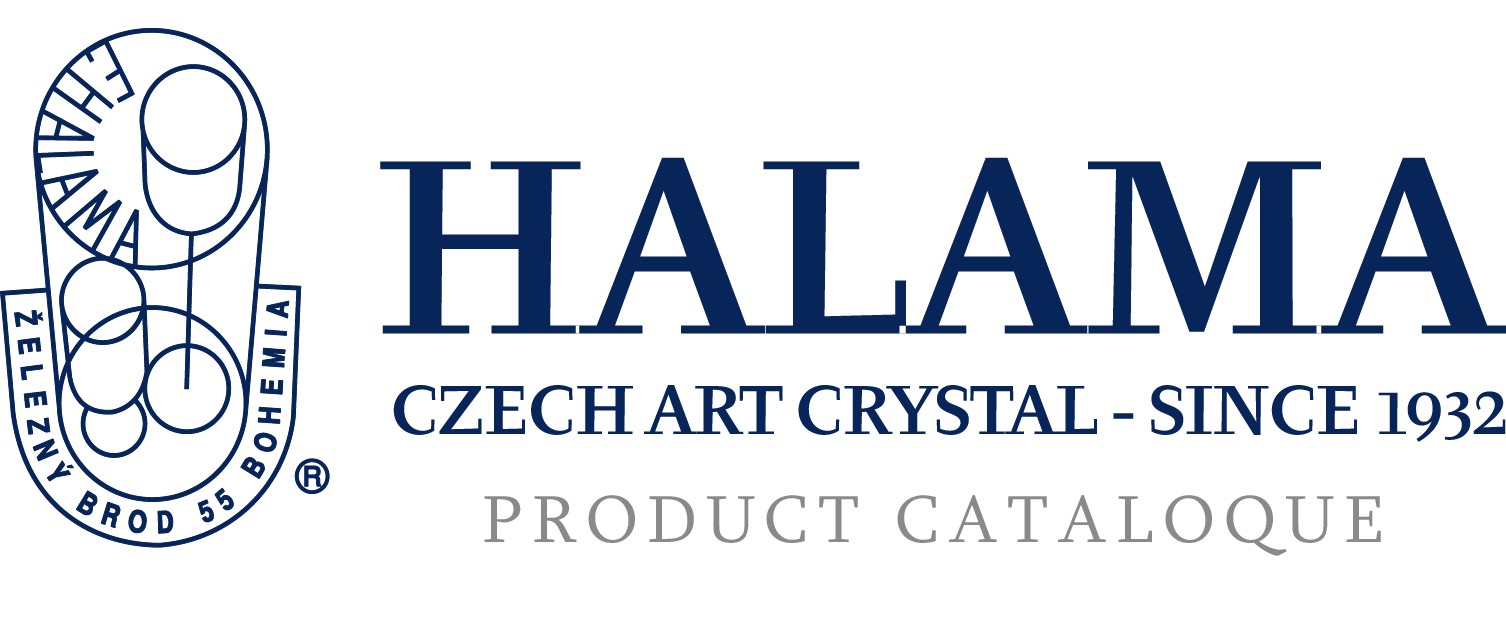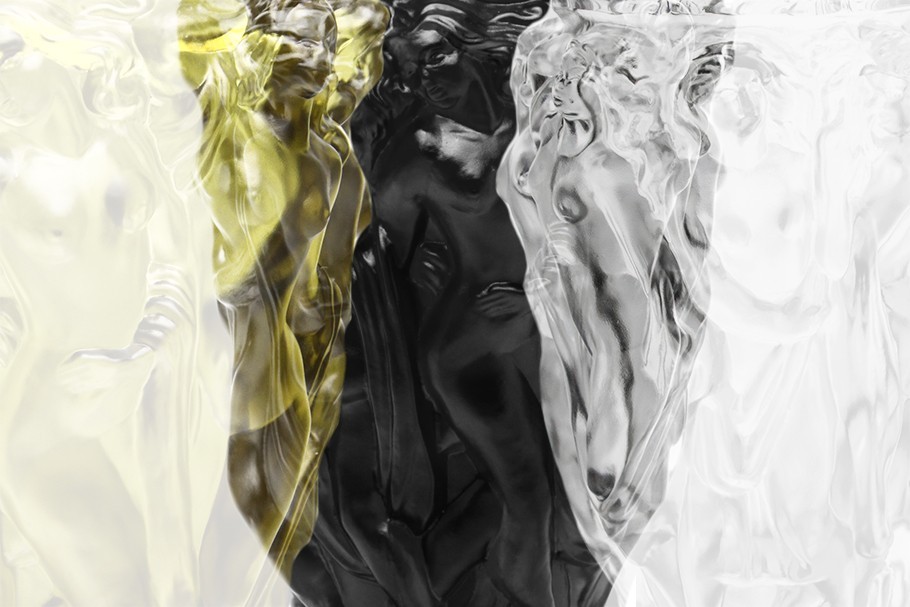- en
- cs

Hot Treatment
The majority of products are produced from “Czech Crystal,” from the potash-lime glass family. The principal raw materials used to produce it include glass sand, potash, recycled glass, and various chemical substances in specific proportions. Raw materials are mixed to create the “raw batch,” or a charge, which is molten to temperatures around 1,400°C. This process takes place in glass furnaces holding cylinder-like containers – tanks, and it takes approximately 15 hours. After removing the gas bubbles from the runny molten glass, it gets cooled to working temperature (approx. 1200°C). Compliance with specific recipes and melting technological procedure gives the glass its hardness, spark, and color.
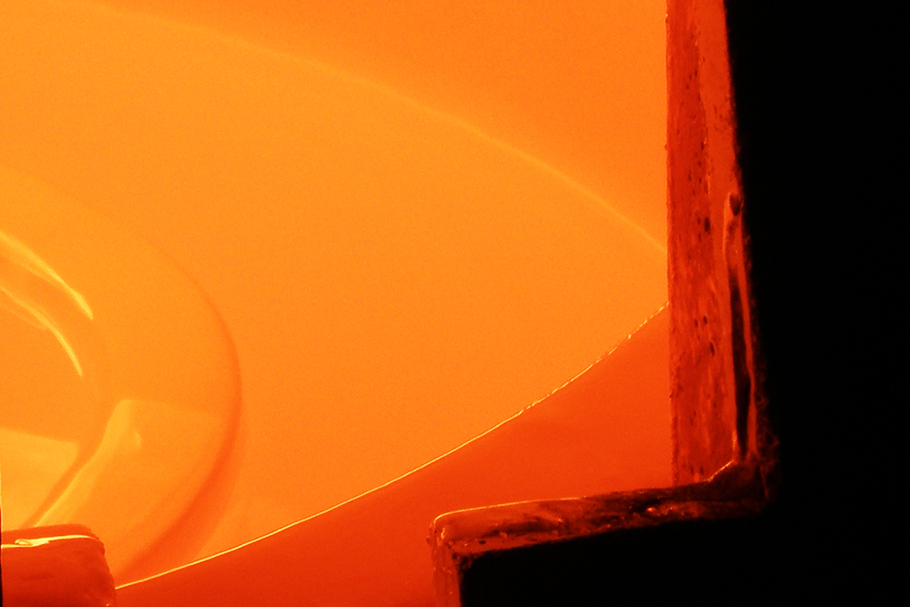
An important component of hot glass production is colored glass production. This procedure involves various metal oxides, which are included in the original glass mixture to create diverse colors. E.g., nickel oxide turns it violet, cobalt oxide turns it blue, while selenium turns glass pink, so-called Rosaline.

The burning hot mass is shaped by means of breath and skilled hands. Each piece of glass product is produced with teamwork, where all involved depend on each other. Speed, precision and conformity are crucial factors due to how rapidly glass cools. At least four people work at each tank and everyone has specific tasks. The team respects a firm hierarchy. The most skilled and able person is the master, then there is the ball maker, glass mold operator, and an assistant. The ball maker takes molten glass on his blowpipe and blows a ball.
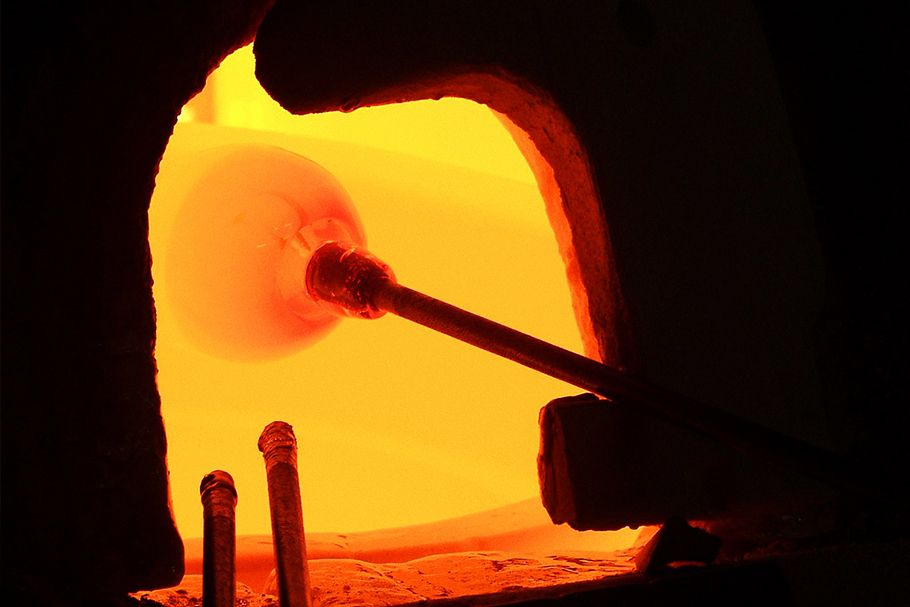
The assistant takes more of the molten glass on the ball and forms the shape close to the final product by blowing and with the use of various tools. Such pre-shaped molten glass is then placed on the blowpipe into metal molds of different sizes. By the blower’s breath entering the core, molten glass adopts the form and design of the mold’s shape.
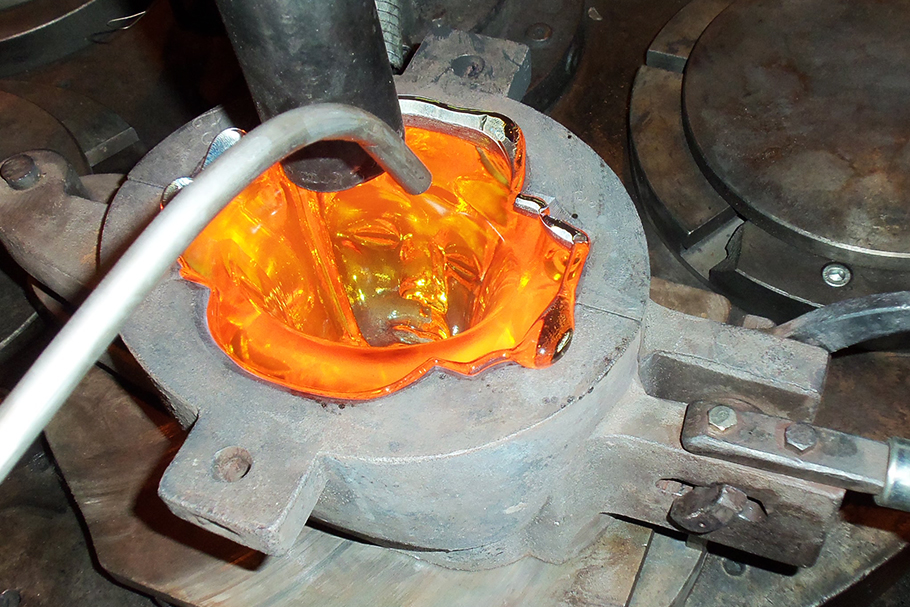
Press Forming
In other cases, instead of being blown, the glass is pressed by the glass-maker’s hand, with the help of a metal core, into the mold or smaller metal pliers.
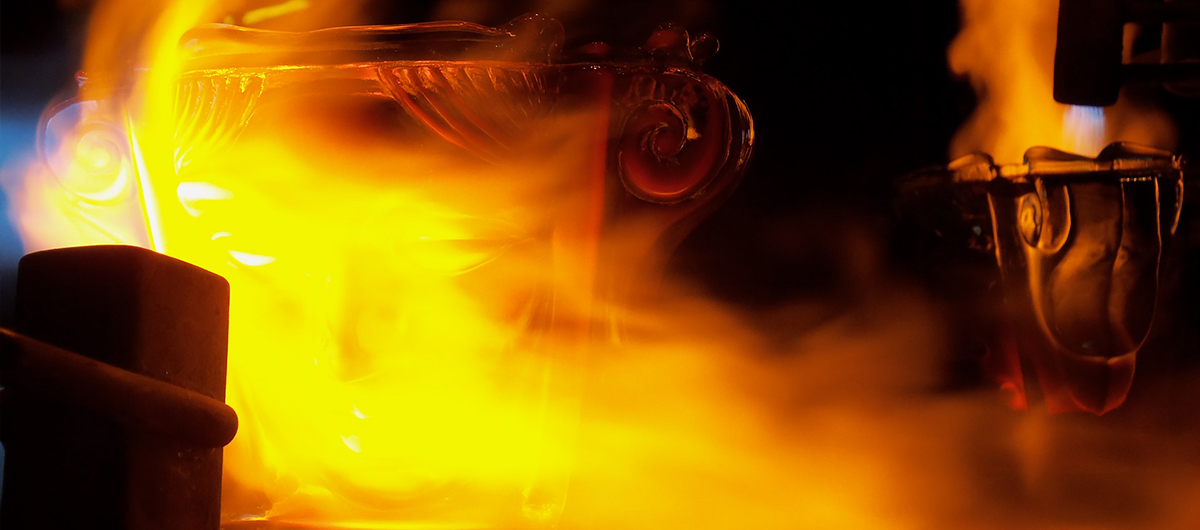
As soon as these steps are completed and after the necessary time interval required for the mass to cool down a little and for the forms to be shaped properly, this hot, semi-finished product is taken out of the mold and the first visual check takes place. If a surface imperfection is detected, the final few moments are used to correct the surface with fire.

The final task of the team is to transfer the hot glass into the cooling furnace. Here, the temperature is gradually decreased and the products spend 3 to 24 hours, especially for large items the time may be even longer. Only completely cooled glass is ready for further treatment.
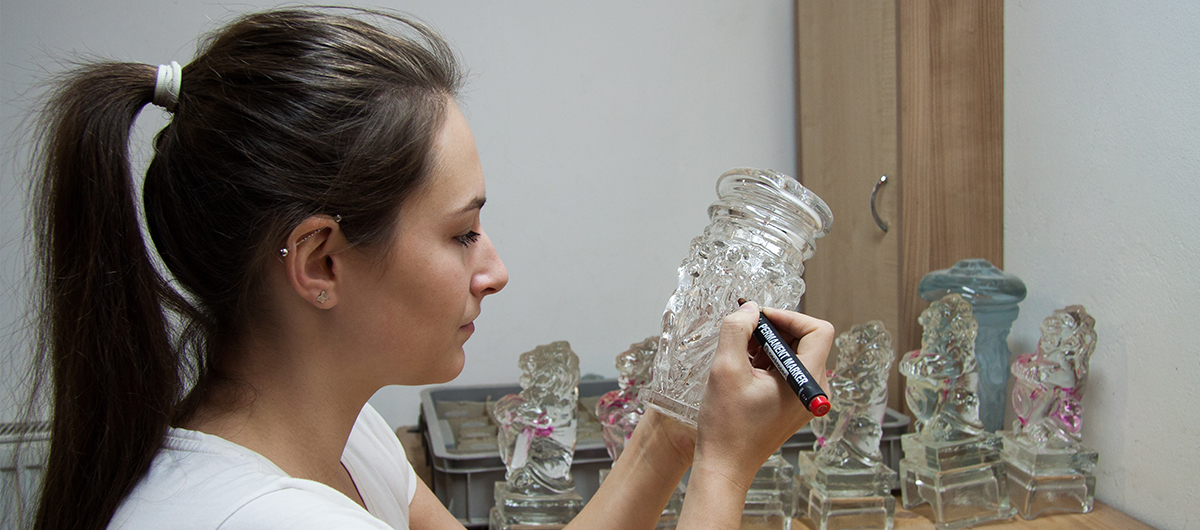
Cold Treatment
Cold treatment is preceded by the first thorough quality check, which only correctly sized, shaped and flawless products pass, avoiding defects that the subsequent treatment would be unable to eliminate. Other items nonconforming to set characteristics – thickness of the walls, bottom, details of forms - or items with unacceptable bubbles or impurities contained in the glass are broken and the shards are reused to prepare the batch.
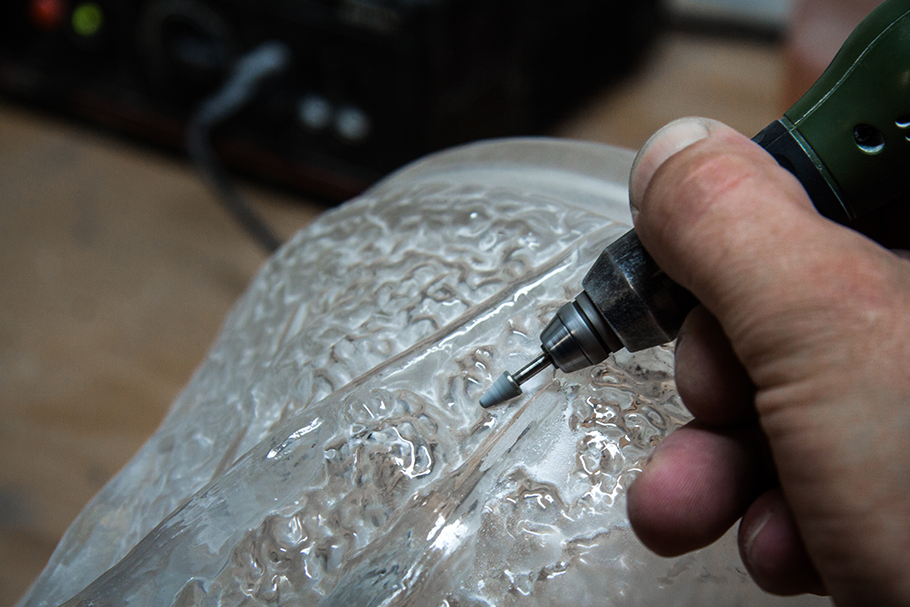
Correcting
Having passed the examination, the semi-finished product passes on, where possible minor surface defects are eliminated.
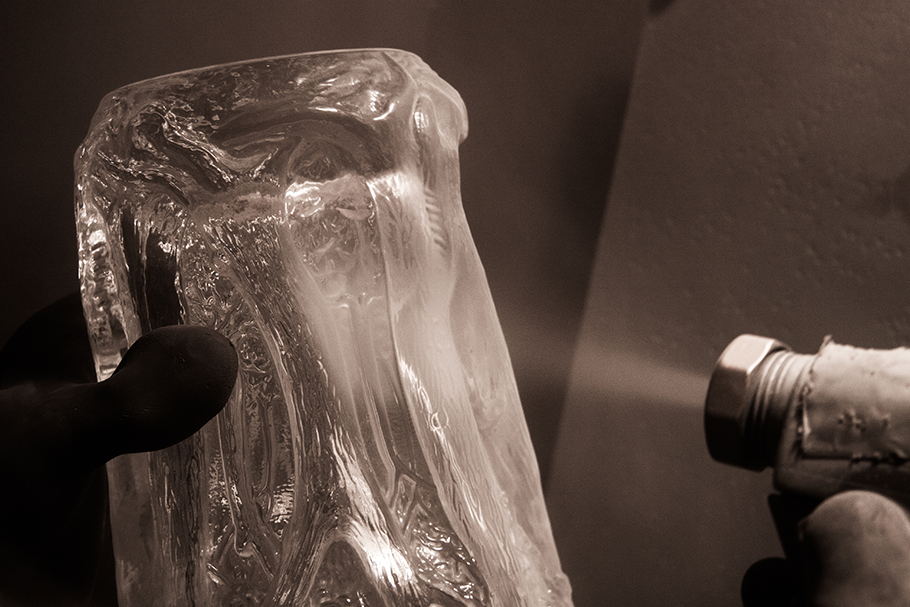
Sanding
Another step of the treatment is sanding, mechanical blasting of the glass item with corundum, which turns the glossy surface matte.

Cutting the cap
Once transferred to the grinding shop, the cap, i.e., the part of the item, which used to connect the blowpipe to the future product, is eliminated. This is done by cutting using a diamond saw.
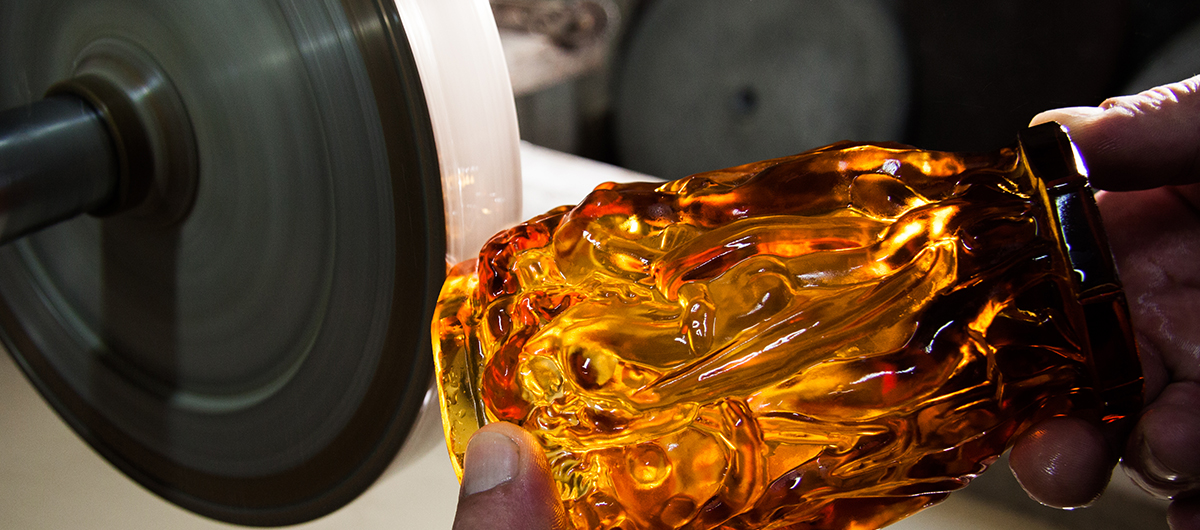
Grinding
The essence of grinding is to eliminate glass in varying depths in order to achieve requested plasticity of the product surface. Grinders use grinding discs on grinding machines to treat glass items. These discs are of different coarseness, diameter, width, and profile according to the requested decor. Both natural and synthetic discs are used. Glass is ground at the circumference of the disc, which turns towards the grinder.
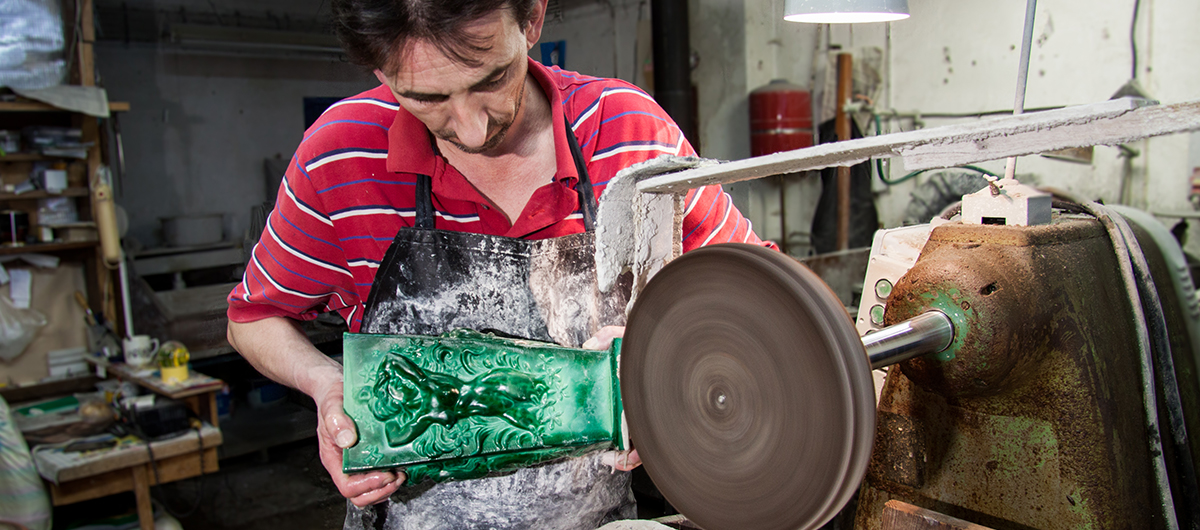
Each aspect of this activity - movement, force used, or visual checking, have undeniable impact on the quality of the whole item. Our range includes a number of ground products differing by the type of grinding, from jointing to shape-grinding. All those hand ground surfaces need to undergo repeated refinement and mechanical polishing until the final deep gloss. This is achieved once again by many felt discs and using polishing powders and emulsions.

Adjusting Bottles and Perfume Bottles to Caps
To achieve stable functionality or tightness of bottles and perfume bottles with caps, diamond cone tools are used. Since the thickness of walls of bottles and perfume bottles is influenced by blowing, every bottle or a smaller perfume bottle needs to be adjusted to fit a specific cap. To do this, refining and polishing tools of various coarseness have to be used. Each bottle and cap are then a unique couple.
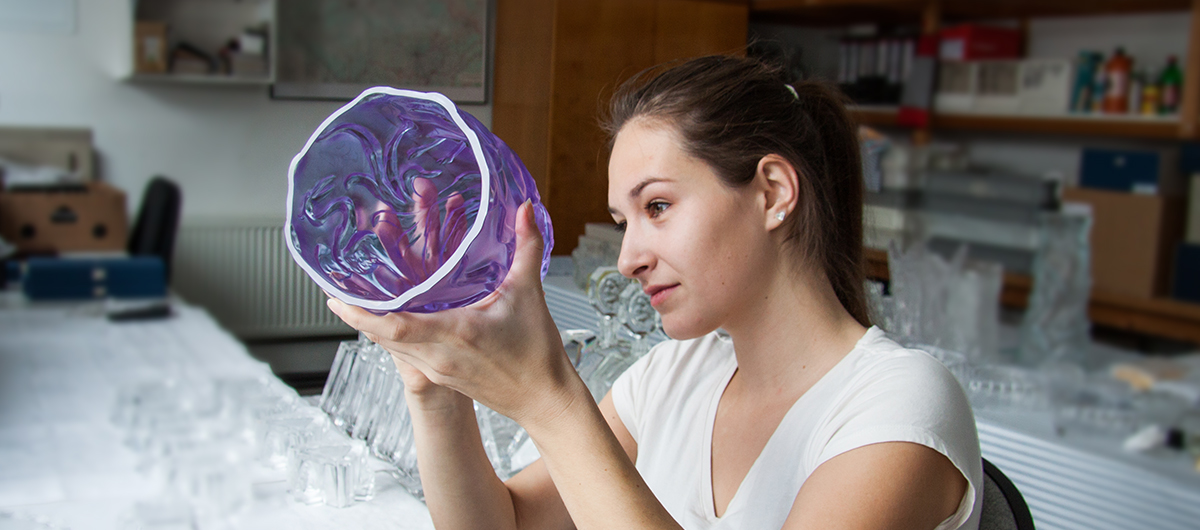
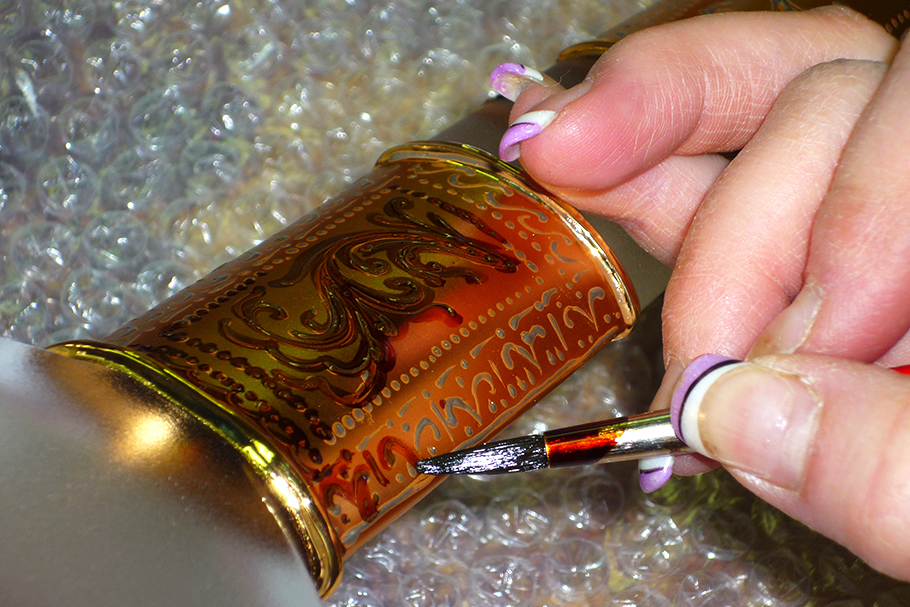
Gold-plating
After grinding, many products are gold-plated. Skilled painters apply gold to the product using brushes of different types and fineness. Gold is used to emphasize ground elements, stressing the shape as well as decorative features, which are often the central motive of the whole product. For gold-plating, a mixture of the precious metal in a solution is used with a set content of the 24-carat gold. The best quality is achieved using 12% of gold in the mixture. Gold-plated products are then baked in an electric furnace at the temperature of about 540°C.
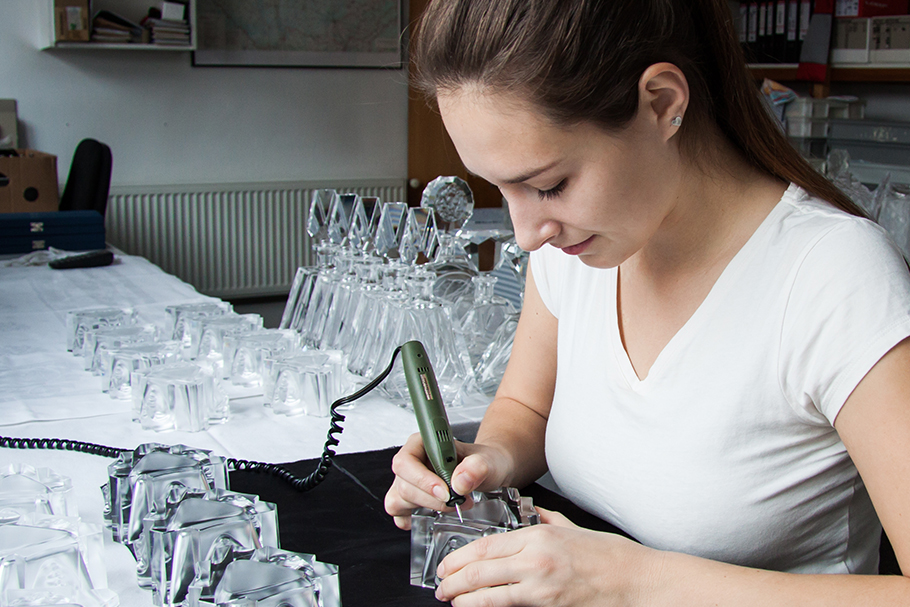
Signing
Products embellished by the aforementioned techniques and subject to several steps of quality control following each process, are true glass wonders and become bearers of the Halama brand. The “hall-mark” of quality is the hand-made signature on the bottom of each item.
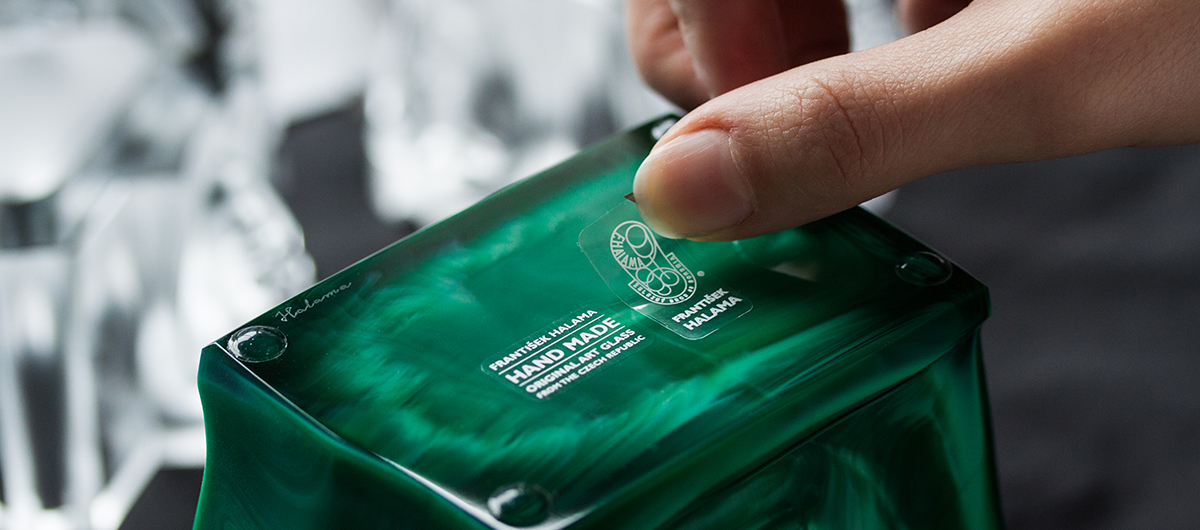
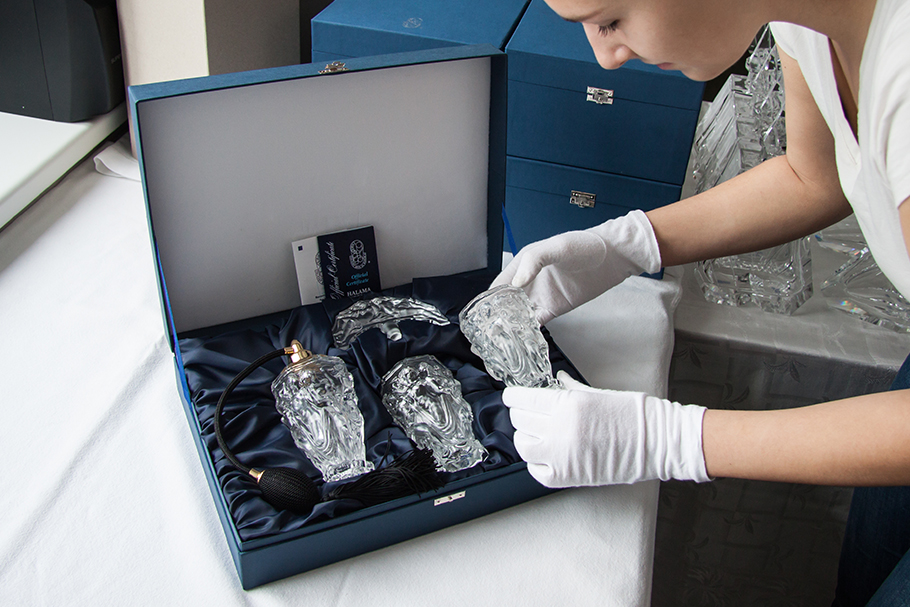
Packaging
Every product package includes a “Certificate of Quality” and the “Recommended Care of the Hand-Made Product” in the gift box.
